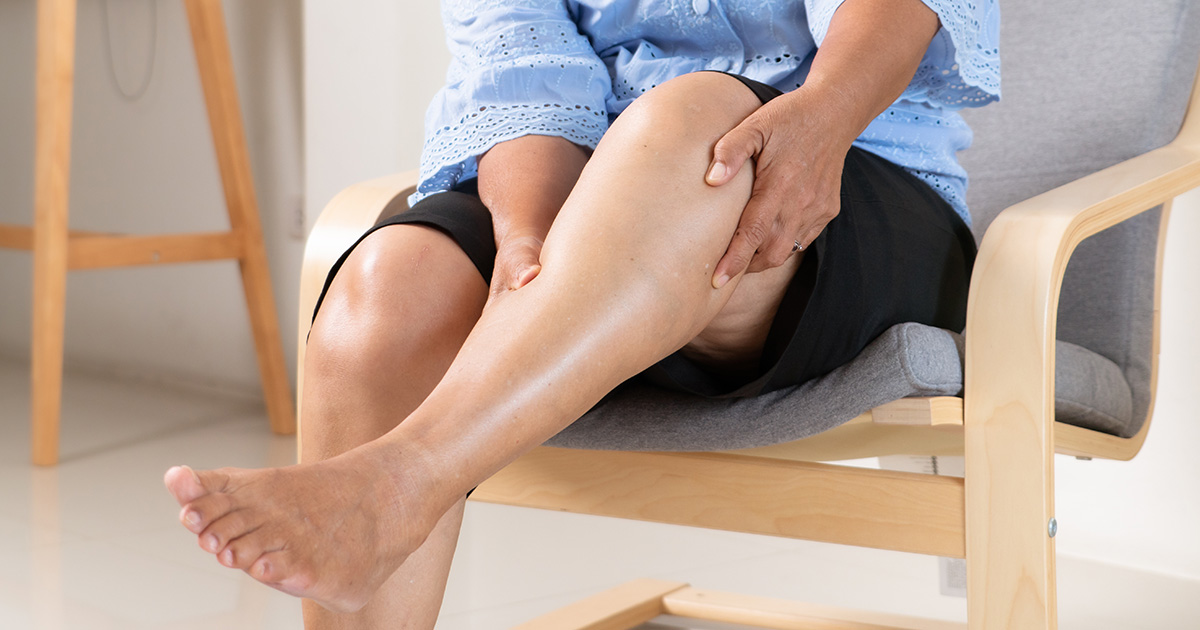Peripheral artery disease (PAD) is a condition where there is a narrowing or blockage of the arteries that supply blood to the legs and feet, causing decreased blood flow to these areas. PAD is caused by a buildup of plaque in the arteries, which is known as atherosclerosis.
Symptoms
- Pain or cramping in the legs, thighs, or buttocks during physical activity: This is often described as a dull, aching pain that is relieved with rest.
- Numbness or weakness in the legs: This may be a sign of reduced blood flow to the legs and feet.
- Coldness in the lower leg or foot: This may also be a sign of reduced blood flow to the legs and feet.
- Slow or non-healing sores on the legs or feet: This is a sign that the tissue in the legs or feet is not getting enough oxygen and nutrients.
- Hair loss or slow hair growth on the legs or feet: This may also be a sign of reduced blood flow to the legs and feet.
- Weaker pulses in the legs or feet: This is a sign that there may be a blockage in the artery.
Not everyone with PAD will experience all of these symptoms, and some people with PAD may not experience any symptoms at all. If you have any of these symptoms, it’s important to speak with a healthcare provider to determine if PAD or another condition may be causing them. Early detection and treatment of PAD can help prevent complications and improve outcomes.
Diagnosing Peripheral Artery Disease
Peripheral artery disease (PAD) can be diagnosed through a combination of medical history, physical examination, and diagnostic tests. Here are some common methods used to diagnose PAD:
- Medical history: Your healthcare provider will ask you about your symptoms, including any pain or cramping in the legs during physical activity, as well as any risk factors you may have for PAD, such as smoking or diabetes.
- Physical examination: During a physical exam, your healthcare provider may check the pulses in your legs and feet, look for any signs of wounds or sores, and check for signs of decreased blood flow to the legs.
- Ankle-brachial index (ABI): An ABI test compares the blood pressure in your ankle to the blood pressure in your arm. A lower ankle pressure compared to the arm may indicate PAD.
- Doppler ultrasound: This test uses sound waves to create images of the blood flow in your arteries. It can help detect areas of narrowing or blockage in the arteries.
- Angiography: This imaging test uses X-rays and a special dye to create images of the arteries. It can help identify the location and severity of any blockages in the arteries.
- Magnetic resonance angiography (MRA): This imaging test uses magnetic fields and radio waves to create images of the arteries. It can also help identify the location and severity of any blockages in the arteries.
Your healthcare provider may recommend one or more of these tests to help diagnose PAD. Early detection and treatment of PAD can help prevent complications and improve outcomes.
Treatment
The treatment for peripheral artery disease (PAD) depends on the severity of the condition and the presence of symptoms. In mild cases, lifestyle modifications may be recommended, while more severe cases may require medications or medical procedures. Here are some common treatment options for PAD:
- Lifestyle modifications: Quitting smoking, engaging in regular exercise, eating a healthy diet, and managing other health conditions such as diabetes and high blood pressure can help improve blood flow and reduce the risk of complications.
- Angioplasty and stenting: In this procedure, a small balloon is inserted into the affected artery and inflated to widen the artery and improve blood flow. A stent may also be inserted to help keep the artery open.
- Bypass surgery: In this procedure, a healthy blood vessel is taken from another part of the body and used to bypass the blocked or narrowed artery, allowing blood to flow more freely.
- Endarterectomy: This surgical procedure involves removing the plaque buildup from the inner lining of the affected artery, improving blood flow.
The appropriate treatment for PAD depends on a number of factors, including the severity of the condition and the presence of other health conditions. It’s important to work with a healthcare provider to determine the best treatment plan for your individual needs.
Importance of treating / managing PAD
Checking for peripheral artery disease (PAD) is important for a number of reasons:
- Early detection: PAD can often go undiagnosed because some people may not have any symptoms or may mistake their symptoms for something else. However, early detection of PAD can help prevent complications and improve outcomes.
- Prevention of complications: PAD can increase the risk of complications such as heart attack, stroke, and amputation. Detecting and treating PAD early can help reduce the risk of these complications.
- Improved quality of life: Symptoms of PAD such as leg pain and cramping during physical activity can make it difficult to engage in regular exercise and activities. Treating PAD can help improve blood flow and reduce symptoms, allowing for a better quality of life.
- Management of other health conditions: People with PAD often have other health conditions such as diabetes and high blood pressure. Detecting and treating PAD can help improve the management of these conditions.
- Reduced healthcare costs: Detecting and treating PAD early can help reduce the risk of complications and the associated healthcare costs.
If you have risk factors for PAD such as smoking, diabetes, or high blood pressure, or if you are experiencing symptoms such as leg pain or cramping, it’s important to talk to your healthcare provider about getting screened for PAD.
To schedule a consultation, please call Asian Cardiovascular Institute at (02) 8771 – 9000 local 5748 or 5929


